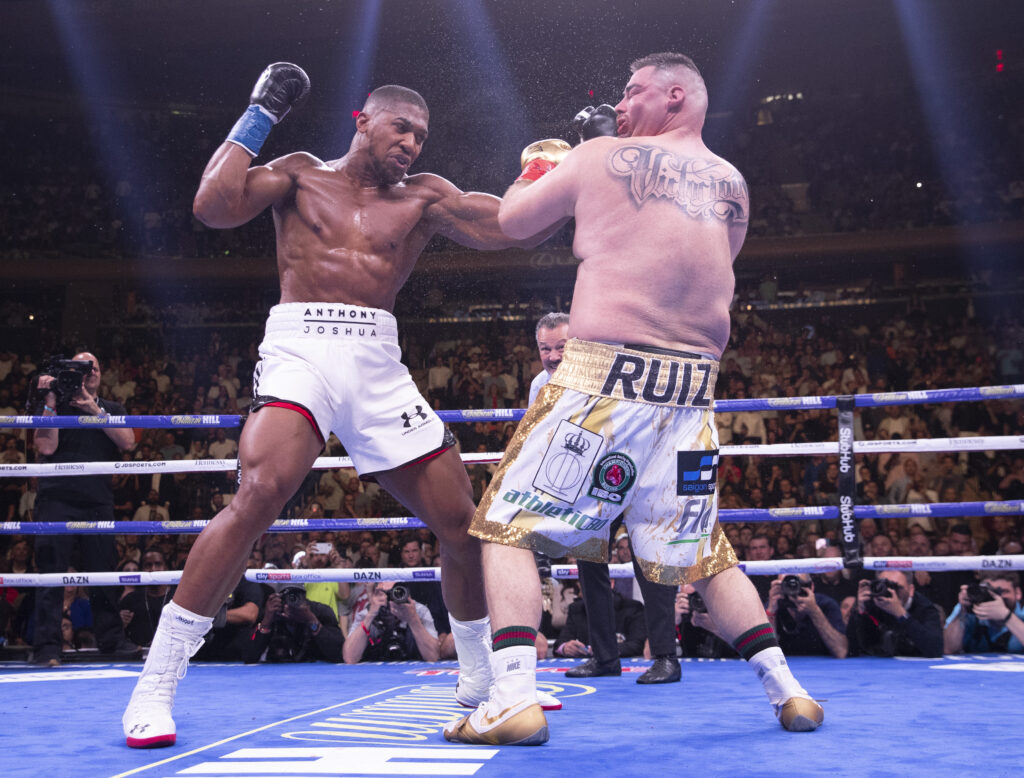Sean Anderson looks back at the astonishing number of boxing shows Madison Square Garden staged at the backend of the Second World War.
It would be an understandable assumption to make that 1945 was a low-key year for boxing. From west to east the planet was in chaos due to World War II. It only officially ended for Americans after a formal surrender document was signed on September 2 in Japan.
However, it was by no means a quiet year at one of the most famous arenas to stage the noble art. Madison Square Garden astoundingly hosted 43 shows. In the history of the venue, dating back to 1883, this has only been exceeded once, 44 events taking place in 1931.
In 1945. the infamous promoter Mike Jacobs was still in charge of proceedings at the site often referred to as MSG. Legendary names such as Beau Jack, Fritzie Zivic, Willie Pep, Sandy Saddler, Rocky Graziano, and Ike Williams graced the iconic location with their skills during a year that the world was at war. Jake LaMotta and Ray Robinson also appeared, fighting each other in what was the third fight of their historic rivalry.
Shows generally took place on a Friday with a few Mondays also included. On one occasion there were five events held over just a ten-day period. The action proved popular, attendees using the entertainment as a form of escapism from the conflict in the world.
Of the aforementioned boxers, Graziano appeared five times, La Motta, Zivic and Saddler four while Williams got between the ropes at the Garden three times that year. Robinson did so twice while it was just the solo outing for Jack, a man that headlined Madison Square Garden a record 21 times. Pep also appeared just the once, winning the world featherweight title for the first time.
Across the globe there was only one other challenge for a world strap throughout the year, Williams becoming lightweight champion in Mexico. The other recognised world champions of the time were Jackie Paterson, Gus Lesnevich, Manuel Ortiz, Tony Zale and Joe Louis. Paterson never fought in America; Ortiz based himself on the west coast. As for Lesnevich, Zale and Louis, they never raised a fist in 1945.
As the world slowly returned to a certain level of normality, the large amount of fight nights continued at the Garden for many years. Throughout the 1950’s there were regularly well over 20 cards a year, the same can be said up to the mid-sixties. However, after this they dropped significantly. The last time they hit double figures at MSG was 1972. This is not necessarily a sign of its demise, the everchanging landscape of boxing and the frequency boxers now ordinarily perform has affected the number of shows.

Photo: Mark Robinson/Matchroom Boxing UK
It now only hosts big-time boxing, a result of which is the fact that since the York Hall opened in Bethnal Green back in 1967, it has hosted treble the amount of the events the MSG has over the same period, albeit of a generally small hall nature.
The competition for hosting high profile boxing events is also more intense than ever, most likely the reason that on occasion the Garden has gone a full year without providing squared circle entertainment. Many businesses are now offering locations with larger capacities and/or an opportunity for those involved to make more money. There was still competition in the 1940’s, other primary venues included Olympia Stadium in Detroit along with the Polo Grounds and Yankee Stadium in New York, but there is now more than ever.
Regardless of this, boxers still crave an appearance at MSG on their resume. This is despite the fact that the Garden has been demolished and rebuilt four times, in three different locations. The building that currently sits at 4 Pennsylvania Place, still stands tall amongst giant stadia, obscure cash havens and the Las Vegas casino industry. In 2019 it hosted the most boxing events it had since 1978, including Anthony Joshua versus Andy Ruiz. It will certainly never host 43 boxing events in a year again, but it is still, to most, the ‘Mecca’ of boxing.
Feature image: Nick Potts/PA Archive/PA Images
